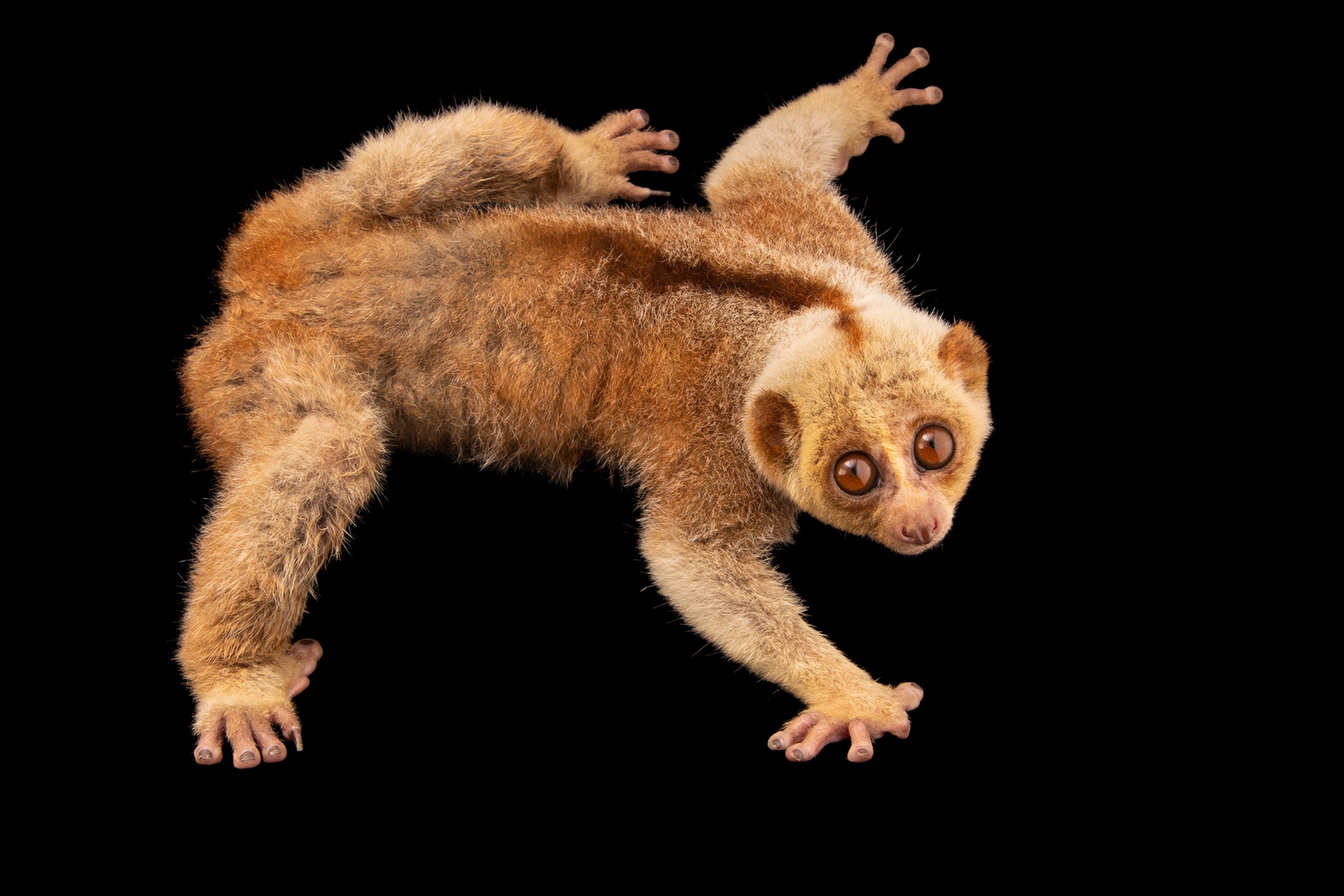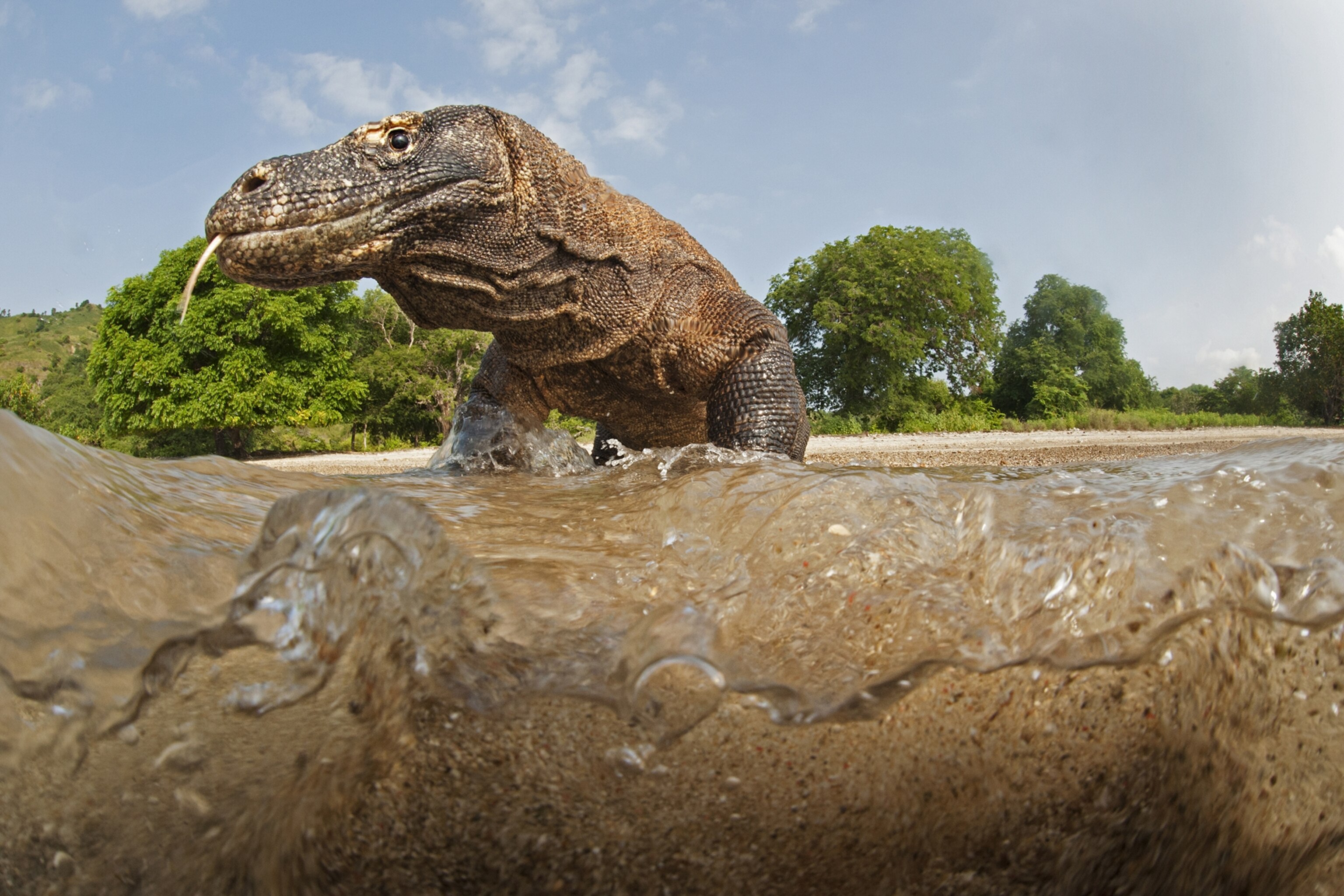If you cross paths with an unknown species of snake, you may wonder if it’s poisonous or venomous—or if there’s even a difference. The truth is “venomous” and “poisonous” are unique concepts, and describe specific ways that animals wield their chemical weaponry.
Venomous and poisonous animals both use toxins—substances that cause substantial, harmful physiological effects at small doses—to defend themselves or subdue prey. (Learn more about the origin of venom.)
But venomous creatures, such as wasps, deliver their toxic cocktails by wounding another animal, often via a fang, stinger, or spine. In contrast, poisonous organisms administer secretions passively, usually through their skin, when another creature touches or ingests it (think poison frogs).
Pick your poison
Poisonous species only deploy their toxins defensively, to avoid being eaten by predators, says David Nelsen, a biologist at Southern Adventist University in Tennessee. This is why venoms bypass the digestive system via wounds to the body.
When ingested by a predator, for example, these toxins travel through the body quickly, causing temporary illness or death, depending on the poison and the dose. Pufferfishes, for instance, are especially deadly due to a neurotoxin in their skin and organs that's more toxic than cyanide.
Many poisonous animals don’t manufacture their own defenses, instead gleaning them from sources in their environment. Pufferfishes, for example, get their tetrodotoxin from a marine bacterium. As caterpillars, monarch butterflies eat toxic milkweed plants, which gives them a bitter taste in adulthood.

Warning colors also abound among poisonous wildlife, particularly brilliant poison frogs native to Central and South America.
“Poison frogs carry a broad assortment of neurotoxic alkaloids that range from simply distasteful to terrifyingly lethal,” says Rebecca Tarvin, an evolutionary biologist at University of California, Berkeley.
One of the most poisonous animals on the planet, Colombia’s golden poison frog (Phyllobates terribilis) concentrates batrachotoxin—probably from tiny beetles in its diet—and secretes it from glands on its skin. One animal produces enough poison to kill several people. (Read how poison frogs avoid poisoning themselves.)
Similar toxin-yielding beetles are thought to supply the poisonous feathers of the hooded pitohui bird (Pitohui dichrous), which is native to Papua New Guinea.

Bites and jabs
Because venoms are generally made by the animals that use them, they’re more physically complex, and “must be delivered more directly into the body of another organism, bypassing the digestive system,” says Nelsen.
And a popular method for many venomous creatures is a toxic bite. Spiders and snakes, for example, dispense their toxins through hollow fangs that shut down their prey’s neurological and circulatory systems. (Learn about the surprising healing properties of venom.)
Nature has evolved other ingenious strategies. Some lizards—including the gigantic Komodo dragon—appear to have their own venomous saliva. The solenodon—a rare, shrew-like mammal from the Caribbean—also has a venomous bite. The marine cone snail uses a modified tooth as a venomous harpoon to ensnare small prey, but it can inject enough toxin to kill animals much larger.
Other venomous animals inject their toxins using a stinger or a spine, like the stonefish, which harbors excruciating venom in its dorsal fin spine, or Greening’s frog, which uses small spines on its head to attack with a toxic “headbutt.”
Stranger still is the venom system of the slow loris (genus Nycticebus), a nocturnal primate from Southeast Asia. The lorises have glands underneath their upper arms that produce toxins, which are then licked up by the loris and dispensed as a bite when threatened.

Anna Nekaris, a primate biologist at Oxford Brookes University, says that the saliva and toxin mixture appear to cause dramatic immune reactions in the bitten animal. “In humans, this manifests itself as anaphylactic shock, extreme pain, or [tissue death],” she says.
A third category?
Bridging the poisonous and venomous categories may be a third toxin delivery type: the toxungen. Toxungenous animals don’t inject their toxins using fangs or stingers, but they don’t wait to be touched or mouthed either: They fling or spray their toxins at their attackers. Bombardier beetles spew irritating benzoquinones from their abdomens, and fire salamanders spray toxins from their glands over a foot away.
Then there’s the skunk.
“Most people have never considered skunk spray as toxic,” says Nelsen. “But a dog or cat that gets sprayed in the face can suffer violent fits of sneezing, vomiting, temporary blindness, and even damage to their red blood cells.”
All of the above
In rare cases, species can be venomous and poisonous at the same time.
Take spitting cobras, which bite and spray painful, blinding venom at the eyes and face of an assailant, thanks to pores in their fangs. This makes them toxungenous as well. (Learn which came first—the snake or the venom?)
Some keelback snakes of Southeast Asia have a venomous bite as well as feed on poisonous toads, stealing the amphibians' toxins and excreting them in their neck glands.
So, sometimes, the answer to the question of, Is this snake poisonous or venomous? may actually be: both.
You May Also Like
Go Further
Animals
- Octopuses have a lot of secrets. Can you guess 8 of them?
- Animals
- Feature
Octopuses have a lot of secrets. Can you guess 8 of them? - This biologist and her rescue dog help protect bears in the AndesThis biologist and her rescue dog help protect bears in the Andes
- An octopus invited this writer into her tank—and her secret worldAn octopus invited this writer into her tank—and her secret world
- Peace-loving bonobos are more aggressive than we thoughtPeace-loving bonobos are more aggressive than we thought
Environment
- Listen to 30 years of climate change transformed into haunting musicListen to 30 years of climate change transformed into haunting music
- This ancient society tried to stop El Niño—with child sacrificeThis ancient society tried to stop El Niño—with child sacrifice
- U.S. plans to clean its drinking water. What does that mean?U.S. plans to clean its drinking water. What does that mean?
- Food systems: supporting the triangle of food security, Video Story
- Paid Content
Food systems: supporting the triangle of food security - Will we ever solve the mystery of the Mima mounds?Will we ever solve the mystery of the Mima mounds?
History & Culture
- Strange clues in a Maya temple reveal a fiery political dramaStrange clues in a Maya temple reveal a fiery political drama
- How technology is revealing secrets in these ancient scrollsHow technology is revealing secrets in these ancient scrolls
- Pilgrimages aren’t just spiritual anymore. They’re a workout.Pilgrimages aren’t just spiritual anymore. They’re a workout.
- This ancient society tried to stop El Niño—with child sacrificeThis ancient society tried to stop El Niño—with child sacrifice
- This ancient cure was just revived in a lab. Does it work?This ancient cure was just revived in a lab. Does it work?
Science
- The unexpected health benefits of Ozempic and MounjaroThe unexpected health benefits of Ozempic and Mounjaro
- Do you have an inner monologue? Here’s what it reveals about you.Do you have an inner monologue? Here’s what it reveals about you.
- Jupiter’s volcanic moon Io has been erupting for billions of yearsJupiter’s volcanic moon Io has been erupting for billions of years
- This 80-foot-long sea monster was the killer whale of its timeThis 80-foot-long sea monster was the killer whale of its time
Travel
- How to plan an epic summer trip to a national parkHow to plan an epic summer trip to a national park
- This town is the Alps' first European Capital of CultureThis town is the Alps' first European Capital of Culture
- This royal city lies in the shadow of Kuala LumpurThis royal city lies in the shadow of Kuala Lumpur
- This author tells the story of crypto-trading Mongolian nomadsThis author tells the story of crypto-trading Mongolian nomads





